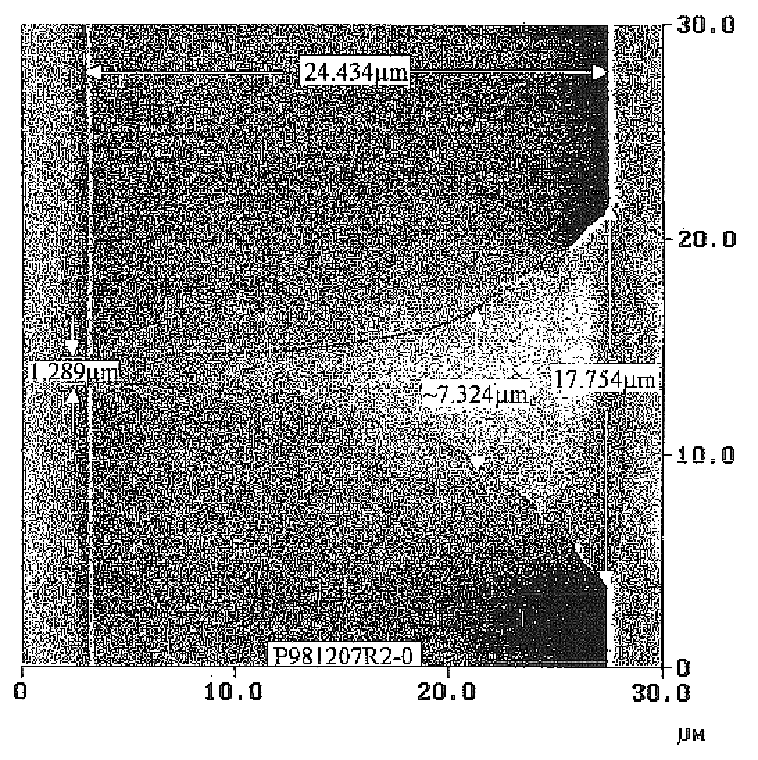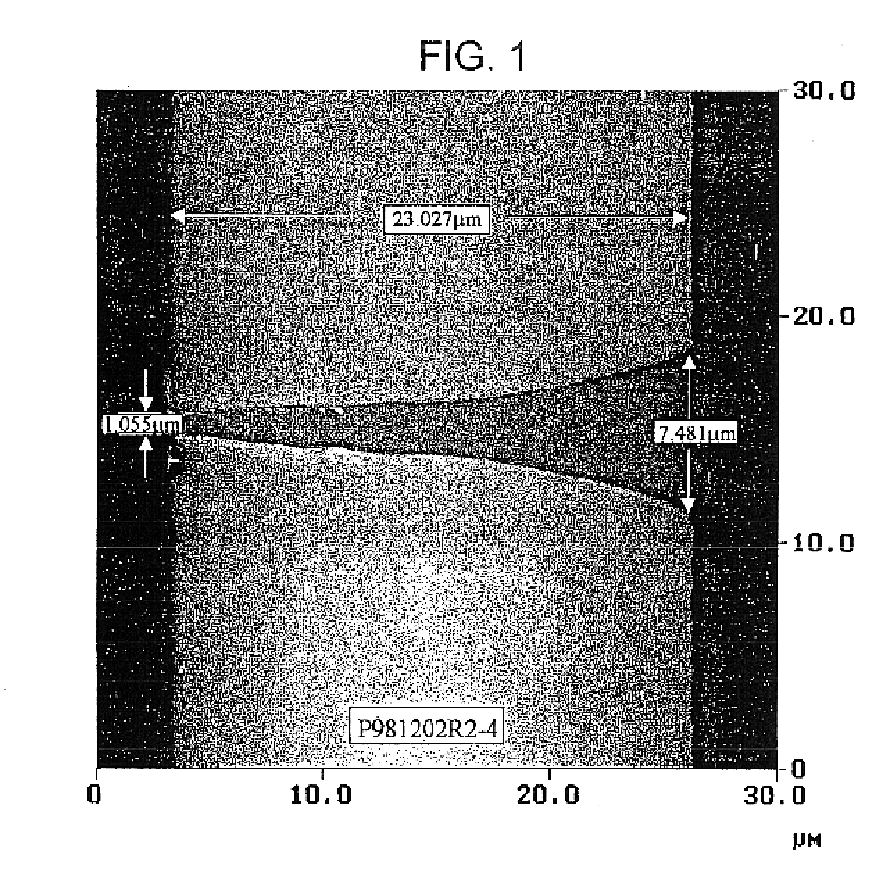Pore structures for reduced pressure aerosolization
a technology of aerosolization and pore structure, which is applied in the direction of aerosol delivery, single-unit apparatus, manufacturing tools, etc., can solve the problems of creating hazardous waste from needles and syringes, health care providers' risk of infection, etc., and achieves the effects of reducing the weight of the delivery device, increasing patient mobility, and increasing the battery li
- Summary
- Abstract
- Description
- Claims
- Application Information
AI Technical Summary
Benefits of technology
Problems solved by technology
Method used
Image
Examples
example 1
[0149]Generation of Stepped Pores in Reduced-pressure Aerbsolization Nozzles
[0150]Nozzles were prepared from thin-film polyimide (25 μm, KAPTON™ Type 100H, DuPont de Nemours Co., Inc.) using an excimer laser. Before drilling the pores, the polyimide film was laminated to an aluminum-polyethylene composite lid layer through comprising one or more die-cut holes, each approximately 6 mm×1.5 mm. The laminate was held by a vacuum platen to a three axis stage.
[0151]A 7×48 array of holes in an area of 2.8 mm×0.5 mm was ablated in the polyimide using 5× projection lens. A mask containing an array of transparent areas of 125 μm in diameter was used to generate pores having an entrance diameter of 25 μm. About 40 pulses of an excimer laser at 630 mJ / cm2 were used to ablate a first step partially through the membrane, to a depth of about 15 μm, thereby forming the first pore step. Then the mask was moved to a different position having having UV transparent areas of 20 μm to generate a second p...
example 2
[0153]Dosage Forms and Blister Packs
[0154]A polyimide-aluminum / polyethylene laminate was made, and a 7×48 array of holes in a 2.8 mm×0.5 mm of the polyimide was formed as described in Example 1. A section of laminate comprising one 7×48 array of holes is a single nozzle. To make a single dosage form, an Aclam blister layer filled with a formulation was heat-sealed to a single nozzle. A single dosage form is shown in FIG. 6. A clamp was formed around the blister and nozzle area. Application of 200 to 400 psi of pressure to the dosage unit resulted in extrusion of the formulation from the blister, through the pores in the nozzle, whereby an aerosol was formed. The time from initial application of pressure to aerosol formation was 1.5 seconds.
[0155]To make a blister pack comprising multiple dosage forms, a polyimide layer was laminated to an aluminum / polyethylene layer as described in Example 1, where the aluminum / polyethylene composite lid layer comprised a regular array of die-cut ho...
example 3
[0156]Formation of Pores Using Grayscale Process
[0157]A mask comprising a first, inner circular area which allowed 100% transmission of energy, a second, circular area surrounding and concentric with the first area which comprised a density of opaque dots such as to allow 50% transmission of energy, was used to generate pores in a 25 μm thick KAPTON™ film. The first circular area had a diameter of 6 μm, while the second area had a diameter of 25 μm. An excimer laser as described in Example 1 was used. 120 pulses of an excimer laser at an energy density of 570 mJ / cm2 was directed onto the mask and through the film until pores were formed. A cross-sectional image of a pore formed in this manner is depicted in FIG. 4.
[0158]Two types of Grayscale nozzles were made in this manner. Type I and Type II nozzles comprise pores having inner circle entrance diameters of 6 μm and 5 μm, respectively, as shown in Table 1.
TABLE 1Inner circleEnergyDiameterDensityNo.FocusμmmJ / cm2PulsesμmType I6570120...
PUM
| Property | Measurement | Unit |
|---|---|---|
| Length | aaaaa | aaaaa |
| Thickness | aaaaa | aaaaa |
| Thickness | aaaaa | aaaaa |
Abstract
Description
Claims
Application Information
 Login to View More
Login to View More - R&D
- Intellectual Property
- Life Sciences
- Materials
- Tech Scout
- Unparalleled Data Quality
- Higher Quality Content
- 60% Fewer Hallucinations
Browse by: Latest US Patents, China's latest patents, Technical Efficacy Thesaurus, Application Domain, Technology Topic, Popular Technical Reports.
© 2025 PatSnap. All rights reserved.Legal|Privacy policy|Modern Slavery Act Transparency Statement|Sitemap|About US| Contact US: help@patsnap.com



